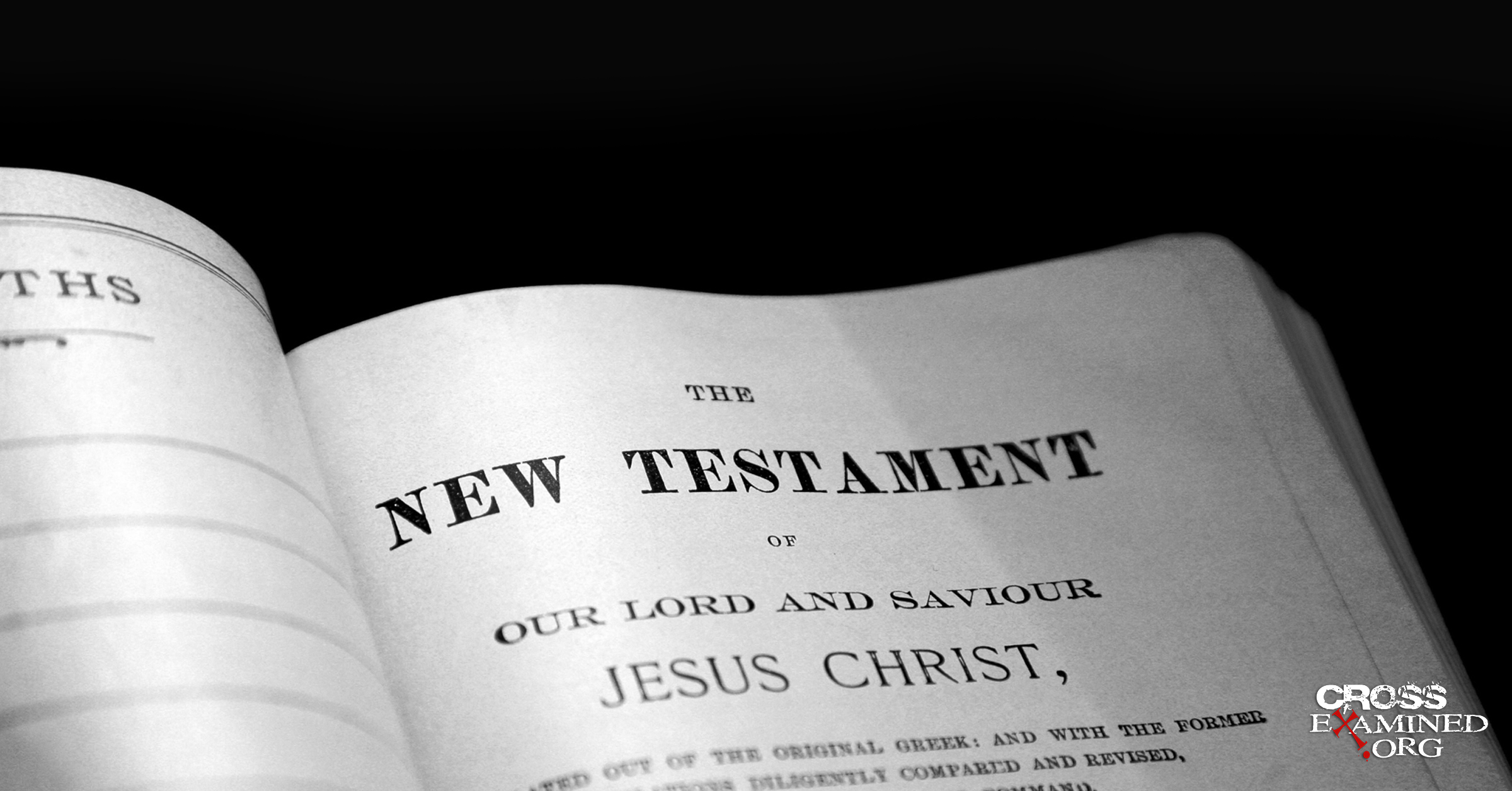By Bob Perry
If you claim to believe the Bible, you better be able to trust that what it says is true. Trusting the Bible means knowing two things. First, that the original authors recorded historically accurate information. And, second, knowing that the Bible we have today contains what the original authors wrote down. “Textual criticism” is the science that analyzes these kinds of issues. It’s a complicated discipline. But the conclusions we can draw from it are simple to understand. Here are 12 reasons you can trust the New Testament manuscripts.
Multiple, Independent Sources Contributed to It
We tend to think of the Bible as a book. And it is … today. But that book is a collection of letters, poems, and historical documents that span thousands of years of human history. There are really 66 books in the Bible. They were written by about 40 different authors (35 of which we are very confident of). And they offer us a remarkably coherent story from beginning to end. We should judge the new testament manuscripts just like we would any other historical document. And one mark of reliable documentation is that it comes from multiple, independent sources.
We Have Thousands of New Testament Manuscripts
When you have lots of copies of a document, it is easy to compare them and see where variations in the text may occur. For instance, we have about 1800 known copies of Homer’s Iliad. This is by far the most copies of any ancient document. By comparison, the next closest is the writings of Demosthenes at 400 copies. Then there are the writings of Julius Caesar (10 copies), and the Roman historians Tacitus (20 copies) and Pliny (7 copies). No one disputes the authenticity of these manuscripts.
But when it comes to the New Testament, we have 5824 copies in the original Greek. When you count other languages (Latin, Syriac, Coptic, and Arabic), there are more than 20,000!
New Testament Scholar Daniel Wallace puts it this way:
“The average classical Greek writer has less than 20 copies of his works still in existence. Stack them up, and they’re 4 feet high. If you stack up copies of the New Testament manuscripts, they would be over a mile high.”
The Manuscripts Were Written Early
We have good evidence to suggest that most of the New Testament was written before 70 A.D. This is not a unanimous conclusion by any means. But it is reasonable. And it is based on historical facts.
After a Jewish uprising against the Romans that began in 66 AD, the Roman Emperor dispatched his General, Titus, to the region to gain control. A conflict ensued that lasted nearly four years. Finally, in 70 AD, Titus surrounded the city of Jerusalem and attacked. In the end, he destroyed the city and burned the Jewish Temple to the ground.
These are not minor incidents. The Temple was the center of the Jewish culture and the home of Judaism. Yet none of the New Testament authors even mention these events. In fact, John 5:2, contains the following passage: “Now there is in Jerusalem near the Sheep Gate, a pool, which in Aramaic is called Bethesda and which is surrounded by five covered colonnades.”
John’s description of the Temple is in the present tense. This suggests he wrote these words before the Temple was destroyed. And most scholars believe John’s was the last Gospel written. The other Gospels and the Book of Acts were penned well before it.
The Documents Are a Collection of Eyewitness Accounts
There is no denying the New Testament reads like a collection of eyewitness accounts about the life and teachings of Jesus. But that doesn’t mean it is. Details count. And details are exactly what the New Testament provides.
In his book, I Don’t Have Enough Faith To Be An Atheist, Frank Turek lists 84 specific details documented by classical scholar and historian Colin Hemer. And these occur just in the last 16 chapters of the Book of Acts. They include the names of people, places, and other details that have been confirmed by history and archeology.
Likewise, the Gospel of John contains 59 confirmed details. None of them are the kind of detail someone would fabricate. And there is no other set of ancient manuscripts that contain this level of historically verifiable authenticity.
Non-Christian Sources Confirm the Most Important Details
There are 10 non-Christian sources who mention Jesus within 150 years of his life. These people have no motivation to confirm anything about him. But they verify every detail of what the New Testament says about his life, death, and resurrection. By contrast, only 9 non-Christian sources who mention the Roman Emperor of that time, Tiberius Caesar. And, if you count Christian sources, Jesus gets 43 mentions. Tiberius only gets 10.
There is no reason these non-Christian sources would confirm details contained in the New Testament unless they were actually true.
We Can Reconstruct It Using Just Quotes of Early Church Fathers
Writing between about 95 – 110 AD, three leaders of the Christian Church cited nearly the entire New Testament. These early “Church Fathers” (Clement, Ignatius, and Polycarp) quoted every book in the New Testament except Jude and 2 John. And since they were quoting the New Testament letters, this serves as further evidence that those letters must have existed well prior to 100 AD.
Historical and Archeological Evidence Corroborate It
There are 30 characters mentioned in the New Testament whose names and positions have been verified by history and archeology.
For instance, we have the actual burial box (“ossuary”) that contains the bones of the High Priest, Joseph Caiaphas, who sentenced Jesus to death. And we have the infamous “Pilate Stone.” This engraved sign authenticates the name and title of the Roman Prefect who released Jesus to his trial by the Jewish authorities.
There are plenty of other examples where archaeology has corroborated the claims of the New Testament, including:
- The Pool of Siloam (John 9:1-12) uncovered in 2004.
- The Pool of Bethesda (John 5:1-9) excavated in 1888.
- Syrian Governor Quirinius (Luke 2:1-3) name discovered on a coin and a statue
- King Lysanias (Luke 3:1) listed on an inscription near Damascus
It Fulfills Ancient Prophecies in Amazing Ways
There are 9 specific Old Testament prophecies that foretell the origin, nature, and life of Jesus of Nazareth. These were written between several hundred and a couple of thousand years before his birth. Yet, they predict the events of his life with deadly accuracy. Daniel 7, Psalm 22, and Isaiah 53 all contain prophecies about his birth, death, and resurrection. These are so accurate many thought they were written after the fact. But the discovery of the Dead Sea Scrolls in 1947 put that notion to rest.
In all, Bible scholar J. Barton Payne identified 71 Old Testament prophecies that were fulfilled by Jesus Christ.
It Contains Embarrassing Details
If you were going to make up or embellish a story about a heroic figure and his henchmen, you certainly wouldn’t include details that embarrassed them. But that’s just what the New Testament manuscripts do. His followers are bumbling fools and cowards who doubt his teachings. His disciples — even his own family — consider Jesus to be out of his mind and a deceiver. Some call him a “drunkard” and “demon-possessed.” But, most amazingly, he suffers the worst kind of defeat any devout Jew could ever imagine. He is hung on a tree (the ultimate curse in the Jewish culture) and killed.
These are not the kind of things that anyone would use to convince you that their hero was a God. They are the kinds of things that a writer includes because he is documenting events that actually occurred.
It Includes the Difficult Sayings of Jesus
Along the same lines, the New Testament writers make Jesus a very difficult figure to serve. He sets new — and unattainable — standards for justice, judgment, lust, marriage, finances, and love. Try to imagine a salesman or storyteller who exhorts you to follow him by imposing those kinds of standards on others. It just makes no sense. Unless the writers were telling the truth.
A “Chain of Custody” Confirms The Content of the Originals
The Monastery of Saint Catherine contains the oldest known complete copy of the New Testament. This manuscript is called Codex Sinaiticus because the monastery was located on the Sinai peninsula. Scholars have dated it to 350 AD.
That’s great. But how do we know it contains what the original authors wrote?
J. Warner Wallace, a retired Los Angeles cold-case detective, applies his methods for evaluating evidence to the biblical manuscripts. In his book, Cold-Case Christianity, Wallace connects the dots between the New Testament authors (Paul, John, Peter, Mark) and their students that leads directly to Codex Sinaiticus. Wallace shows that we have a reliable chain of evidence between the words of the oldest copy of the New Testament and the men who wrote the words contained in it.
It Contains “Undesigned Coincidences” That Verify Its Authenticity
One of the most powerful ways to tell if a story is authentic is to compare how different eyewitnesses tell it. If the accounts are exactly the same, you suspect collusion. If they’re wildly contradictory, you suspect that somebody is lying or that the story just isn’t true. But when two accounts tell the same story from different points of view, that is the hallmark of authenticity. This is especially true if one version inadvertently provides complementary details to another. Some scholars call these “undesigned coincidences.”
As an example, compare Matthew’s account of Jesus’ appearance before the Sanhedrin in Matthew 26:67-68. After they spit in his face, strike him with their fists, and slap him, they say, “Prophesy to us, Christ. Who hit you?” That’s a weird question to ask someone who you just slapped across the face.
Until you read Luke’s account.
In Luke 22:64, we find out that before the Jewish leaders began questioning Jesus, they blindfolded him.
This is a “coincidence” that no one planned. It’s a powerful indication that the accounts are real. And the Bible is littered with these kinds of harmonizing features. Links to detailed resources about these “undesigned coincidences” are available below.
The New Testament Verifies the Old Testament
The reliability of the New Testament is beyond dispute. And that means we can trust its purpose — to give an account of the life, teachings, death, and resurrection of Jesus of Nazareth. Jesus is exactly who he said he was. His resurrection confirmed it. And Jesus certifies what the Old Testament says. That means the Old Testament is also reliable for many of the same reasons.
There are plenty of resources (some offered below) that give more detail about these issues. Check them out. Study them.
You can have confidence in the fact that there are plenty of reasons we can trust the New Testament. And knowing why that is true goes a long way toward helping you own your faith.
Resources
Books on “Undesigned Scriptural Coincidences”
Lydia McGrew, Hidden In Plain View: Undesigned Coincidences in the Gospels and Acts
Eric Lounsbery, J. J. Blunt’s Undesigned Scriptural Coincidences
Books On the Reliability of the Bible
Walter C. Kaiser, The Old Testament Documents: Are They Reliable and Relevant?
F. F. Bruce, The New Testament Documents: Are They Reliable?
Mark D. Roberts, Can We Trust The Gospels?
Recommended resources related to the topic:
The New Testament: Too Embarrassing to Be False by Frank Turek (DVD, Mp3 and Mp4)
Why We Know the New Testament Writers Told the Truth by Frank Turek (DVD, Mp3 and Mp4)
The Top Ten Reasons We Know the NT Writers Told the Truth by Frank Turek (Mp3)
Bob Perry is a Christian apologetics writer, teacher, and speaker who blogs about Christianity and the culture at: truehorizon.org. He is a Contributing Writer for the Christian Research Journal, and has also been published in Touchstone, and Salvo. Bob is a professional aviator with 37 years of military and commercial flying experience. He has a B.S., Aerospace Engineering from the U. S. Naval Academy, and a M.A., Christian Apologetics from Biola University. He has been married to his high school sweetheart since 1985. They have five grown sons.


















Facebook Comments